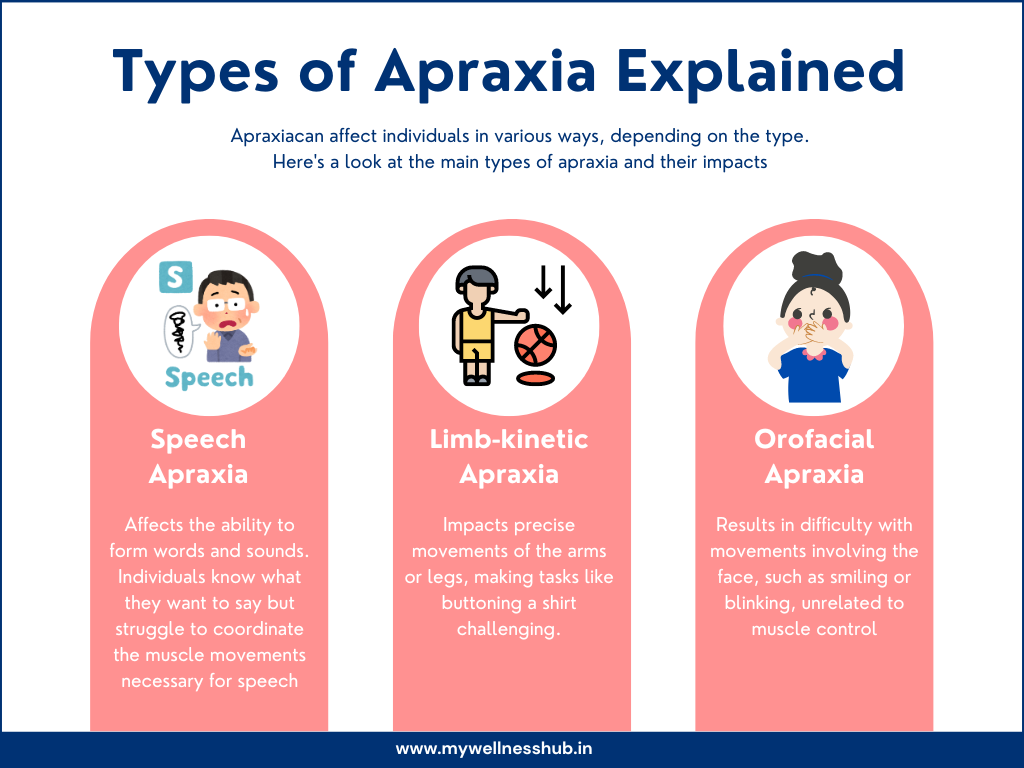What Is Apraxia, Its Causes, Symptoms, and Treatment Options
What is Apraxia?
Imagine being unable to form the words you want to say, or having trouble coordinating your muscles to perform even the simplest tasks. For individuals with apraxia, this is a daily reality. Apraxia is a complex neurological disorder that affects motor planning, causing difficulties with executing voluntary movements, including speech, writing, and other gross and fine motor skills.
At its core, apraxia is a disruption in the connection between the brain and the muscles. While the brain may send signals to initiate movement, the muscles struggle to respond accurately. This disruption can manifest in various ways, depending on the type of apraxia. For instance, a child with childhood apraxia of speech (CAS) may have trouble articulating sounds or words, while an individual with limb apraxia may struggle with manipulating objects or performing everyday activities like dressing or grooming.
To understand apraxia better, let’s consider the case of Emily, a three-year-old girl diagnosed with CAS. Emily’s parents noticed that she was having difficulty saying her name and simple words like “mama” or “dada.” Despite her attempts to communicate, Emily’s words were often jumbled or incomprehensible. With the help of a speech-language pathologist, Emily’s parents learned ways to support her developing communication skills, including using visual aids and playing games that encouraged her to practice articulating sounds.
Apraxia can also affect adults, particularly those who have experienced a stroke or traumatic brain injury. For example, John, a 55-year-old man, suffered a stroke that left him with limb apraxia. He found it challenging to perform basic tasks like tying his shoelaces or buttoning his shirt. With occupational therapy, John learned to adapt to his new physical limitations and develop compensatory strategies to improve his daily functioning.
In both Emily and John’s cases, apraxia is not a matter of lack of intelligence or motivation but rather a neurological challenge that requires specialized support and accommodations. By understanding the complexities of apraxia, we can better support individuals with this condition and help them develop the skills they need to navigate everyday life.
Key statistics to note:
- According to the American Speech-Language-Hearing Association (ASHA), childhood apraxia of speech affects about 1 in 1,000 children.
- Apraxia can co-occur with other conditions, such as autism spectrum disorder, ADHD, or cerebral palsy.
- Early diagnosis and intervention are critical in addressing apraxia, as they can significantly impact an individual’s communication and motor skills development.
In conclusion, apraxia is a neurological disorder that affects motor planning and execution, causing difficulties with speech, movement, and other voluntary actions. By understanding the complexities of apraxia and its various forms, we can provide more effective support and accommodations to individuals with this condition, helping them to develop the skills they need to thrive.

The Complexities of Apraxia: Unraveling the Brain-Body Disconnection
Apraxia is characterized by the brain’s difficulty in coordinating and transmitting signals to the muscles, creating challenges with speech, movement, and various motor skills. Imagine being unable to articulate a simple sentence or struggling to tie your shoes despite having the desire and intention to do so. For individuals with apraxia, this is a daily reality, impacting their quality of life.
The Brain’s Role in Motor Skills
Understanding how the brain controls motor skills is essential for grasping apraxia. When we want to perform a task, such as speaking or walking, our brain sends signals to the relevant muscles, instructing them to contract and relax in a coordinated manner. However, in individuals with apraxia, this process is disrupted, resulting in difficulties with articulation, pronunciation, speech fluency, and challenges with gross and fine motor skills.
Types of Apraxia: A Range of Experiences
Apraxia can manifest in different ways, depending on the specific brain areas affected and the severity of the condition. Common types of apraxia include:
- Speech apraxia: Characterized by difficulties in articulation and pronunciation, affecting the ability to maintain fluency.
- Oral apraxia: Affects the muscles used for speaking, eating, and drinking, resulting in difficulties with tongue movements and lip closure.
- Motor apraxia: Impacts gross and fine motor skills, leading to struggles with balance and object manipulation.
Case Study: Sarah and Her Journey with Apraxia
Sarah, a 5-year-old preschooler diagnosed with childhood apraxia of speech (CAS) at age 2, exemplifies the challenges of the disorder. Despite her eagerness to communicate, Sarah struggled with articulation. Her speech therapist developed a personalized treatment plan using techniques like PROMPT therapy and AAC strategies. With consistent effort, Sarah made significant progress in her vocabulary and articulation.
The Importance of Early Intervention and Support
Diagnosing apraxia can be challenging, especially in young children. However, early intervention and a multidisciplinary healthcare approach—including occupational therapists and speech-language pathologists—can significantly improve communication and motor skills. With determination and the right support, individuals with apraxia can learn to navigate their challenges effectively.
Targeted Keywords: apraxia, speech apraxia, oral apraxia, motor apraxia, childhood apraxia of speech (CAS), PROMPT therapy, AAC strategies, early intervention, occupational therapy, speech-language pathology.
Expanded Overview and History
Apraxia has been a focal point of medical interest for centuries, with the term first introduced in 1871. German neurologist Hugo Liepmann significantly contributed to understanding apraxia as a motor planning disorder. The various types, including oral and limb apraxia, highlight the complexities of the condition.
Understanding the Causes of Apraxia
Genetic factors, brain injuries, and neurodegenerative diseases contribute to the onset of apraxia. Early diagnosis and targeted interventions can immensely improve the quality of life for those affected.
Seek Help Through GoblinX
For individuals dealing with anxiety and ADHD-related challenges that may co-occur with apraxia, tools provided by GoblinX can be invaluable. By using GoblinX’s mobile tools and resources, individuals can find support that complements their journey with apraxia.
For more comprehensive information on mental health challenges like apraxia, visit the GoblinX Website for additional resources.